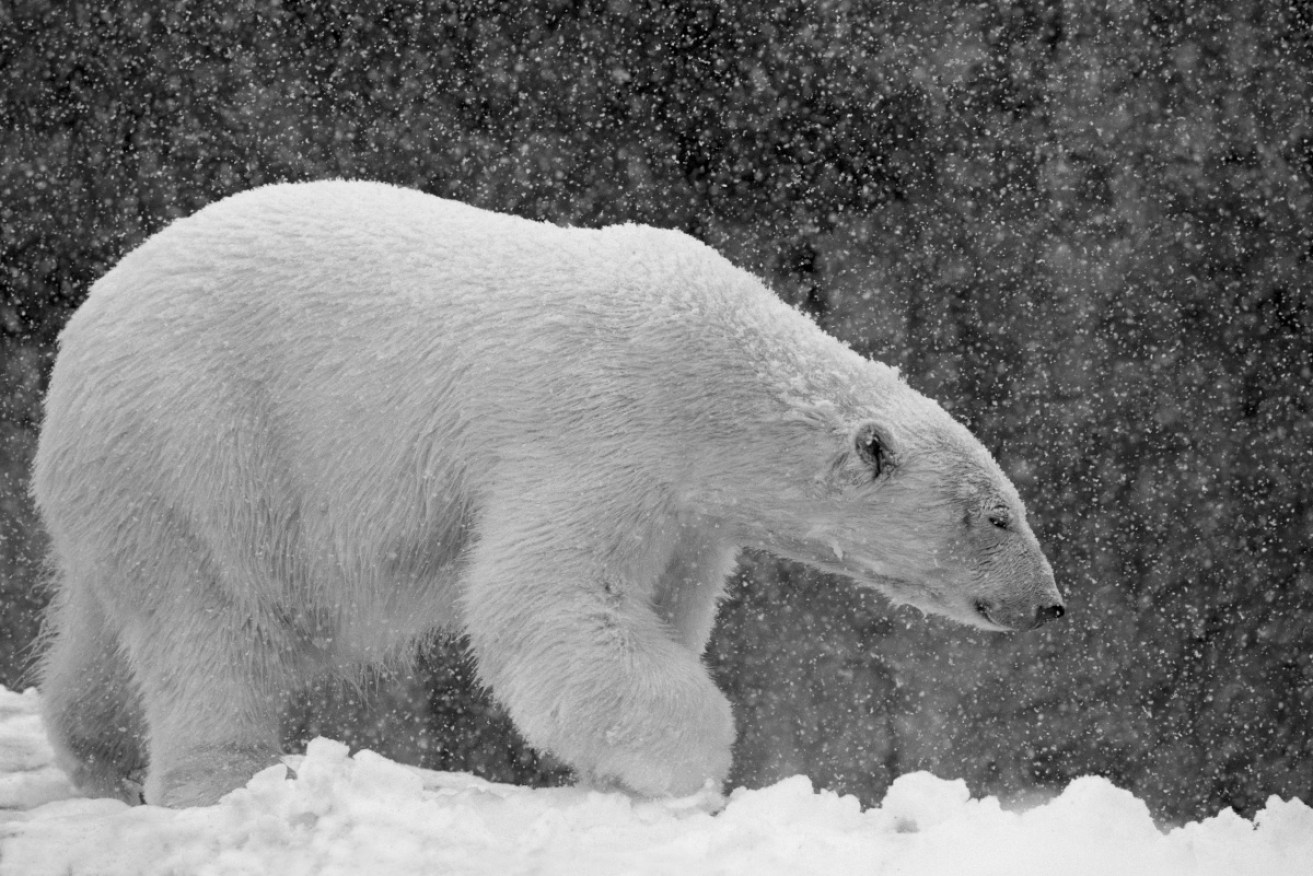Arctic snow infected with microplastics: Wind, not water, the main carrier


In the remote Arctic, snow, including that deposited on ice floes, was found to contain up to 14,400 particles per litre. Photo: Getty
Microplastic particles have been found in tiny zooplankton, bottled water and now, according to a new study, in the fur of polar bears being snowed upon in the Arctic – and most likely in their lungs.
What this really means is that microplastics aren’t confined to rivers and oceans – where most of the research has been focused – but are being carried in the atmosphere for thousands of kilometres.
In the Arctic – as in the European Alps – they are washed out of the air when it snows.
Breathing, not drinking
The scientists, from the Alfred Wegener Institute, Helmholtz Centre for Polar and Marine Research (AWI) in Bremerhaven, Germany, suggest that the atmosphere – and not water – is probably the main way humans and animals are exposed to microplastic particles.
In other words, we’re all breathing them in – and maybe at a higher rate than we drink them.

Snow samples from the Arctic packed and ready for transporting to the lab. Photo: Alfred Wegener Institute
“I think the exposure pathway for us, the main exposure pathway, may be the air that we breathe,” says Dr Melanie Bergmann, a marine ecologist and lead author on the new paper told National Geographic.
Wherever the wind blows
The Arctic findings were the most dramatic – and certainly the focus of international media reports – but the scientists were asking bigger questions.
The science of microplastic dispersal and pollution has only come to public notice in the past two or three years – and presents as an overwhelming disaster for oceans and rivers and anything that drinks water.
As the authors write in the journal Science Advances: “Plastic pollution is a problem of growing environmental concern, because production rates have increased to 380 million metric tonnes a year in 2015, and annual waste production is projected to rise to 3.4 billion metric tonnes.”
How a plastic bag becomes a million tiny pieces
The poster child for this disaster is the plastic bag sucked down stormwater drains.
Out at sea, under pressure from the motion of the waves, and even more effectively by UV radiation from the sun, “the litter is gradually broken down into smaller and smaller fragments” resulting in what we now call microplastics.
These end up sinking into marine sediment, swarming in sea water, and infecting marine organisms and damaging them in ways we don’t yet understand.
There have been a number of limited localised studies that looked at the role of the atmosphere as a mode of transport.
This latest study went much further – anticipating that wind-borne microplastic particles, much like pollen, could potentially travel thousands of kilometres.
But they also focused on falling snow – being a sticky substance – as a potential agent for the particles to drift back to earth.
To this end, they analysed snow samples from Heligoland, Bavaria, Bremen, the Swiss Alps and the Arctic and confirmed that the snow at all sites contained high concentrations of microplastic – even in remote reaches of the Arctic, on the island Svalbard, and in snow on drifting ice floes.
They write: “This study provides the first data on contamination of snow by microplastics. Microplastic concentrations in snow were very high, indicating significant contamination of the atmosphere.
“During its passage through the atmosphere, snow binds airborne particles and pollutants, which are eventually deposited on Earth’s surfaces, a phenomenon termed ‘scavenging’.”
The researchers found the highest concentration in samples gathered near a rural road in Bavaria: 154,000 particles per litre. The snow in the Arctic contained up to 14,400 particles per litre.
Snow a perfect agent for dispersal
According to co-author Dr Gunnar Gerdts, the microplastic concentrations found in snow were considerably higher than those in studies that looked at other airborne carriers, such as dust.
Dr Gerdts suggested two reasons for this: “First of all, snow is extremely efficient when it comes to washing microplastic out of the atmosphere.
“Secondly, it could be due to the infrared spectroscopy we used, which allowed us to detect even the smallest particles – down to a size of only 11 micrometres.”
The big question yet to be answered, says Dr Bergmann: “Once we’ve determined that large quantities of microplastic can also be transported by the air, it naturally raises the question as to whether and how much plastic we’re inhaling.”








